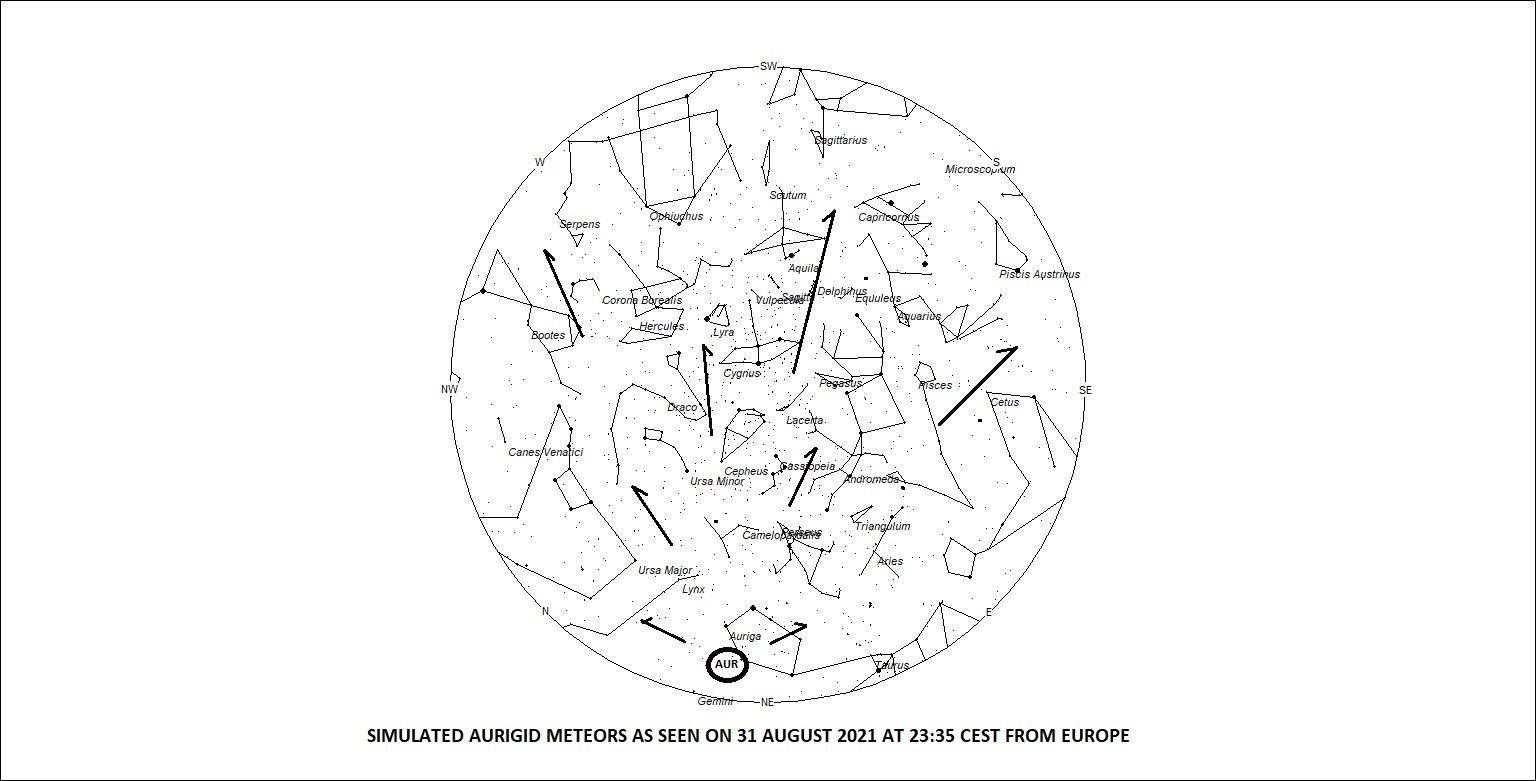
The Aurigids are an obscure shower that is part of the Perseus-Auriga-Lynx complex that is active from August through October. Members of this particular shower can be seen from 25 August through 5 September each year. Maximum activity normally occurs on the last day of August or the first day of September. Hourly rates are usually near 5 at maximum activity. Away from maximum, rates are normally less than 1 per hour. There have been several occasions when the Aurigids have produced an short-lived outburst. These meteors were first noticed in 1935, when an outburst occurred over Europe. A repeat performance was not noticed again until 1986. It is possible that several other outbursts have been missed in this interval as it was only 8 years later that another outburst was witnessed. In 1994, I had the privilege of seeing another Aurigid outburst with the radiant low in the sky, similar to the circumstances occurring this year in Europe. A dozen or so long meteors were noticed shooting upward from the northeastern horizon. As the radiant climbed higher into the sky the activity nearly ceased, indicating a short duration less than an hour. No matter your location, the predicted outburst expected to occur between 23:15-23:45 CEST or 21:15-2145 Universal Time on August 31st. As one moves eastward from Europe, the circumstances improve with the radiant being situated higher in the sky. But there will also be a waning crescent moon situated not too far from the radiant in the constellation of Taurus. This will bother observers in Asia but the moon will still be below the horizon for most observers in Europe. By the time the radiant rises in North America, the outburst should be over and only minimal activity noticed from there. So if your sky is clear on the night of 31 August-1 September, make an effort to stay up late and help us determine if in fact an outburst took place. Nothing is guaranteed and there is a possibility that nothing at all may occur. Negative observations are important too! We look forward to seeing your meteor observing sessions in in IMO database.
References
Rendtel J. (2020). “International Meteor Organization – 2021 Meteor Shower Calendar”. Page 13




 You saw something bright and fast? Like a huge shooting star? Report it: it may be a fireball.
You saw something bright and fast? Like a huge shooting star? Report it: it may be a fireball.  You counted meteors last night? Share your results with us!
You counted meteors last night? Share your results with us!  You took a photo of a meteor or fireball? You have a screenshot of your cam? Share it with us!
You took a photo of a meteor or fireball? You have a screenshot of your cam? Share it with us!  You caught a meteor or fireball on video? Share your video with us!
You caught a meteor or fireball on video? Share your video with us!
2 comments
Several members of the Royal Astronomical Society of Canada’s Edmonton Centre observed a brief outburst of alpha-Aurigids (which we dubbed “Capellids”!) on 2007 Sep 01. I personally observed 9 identified members, 8 of them in a 15-minute span despite a low radiant & significant cloud. All were magnitude of +2 or brighter, with 4 members in the negative magnitude realm. A memorable show, well worth the 7-hour round trip!
https://www.imo.net/members/imo_vmdb/view?session_id=60746
Date: 31. august 2021 / Time: 23:45-24:00 CEST
Several individuals have reported what could be meteors low on the sky of Torshavn, Faroe Islands.
There may have been a case on 31. August at 06:00 CEST at the same area in the sky.